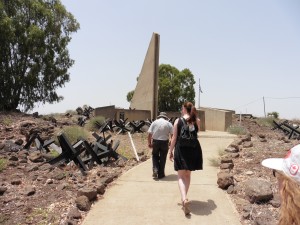
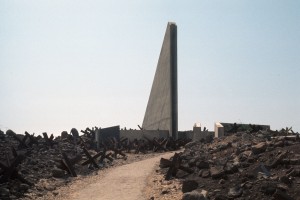
“As the smoke subsided, thousands of Galilee settlers, climbed out of their shelters. For the first time in nearly 20 years they could look up at the Golan Heights with pride instead of fear.”
At Mitzpe Gadot there is a tall, triangular concrete monument to commemorate fallen Israeli soldiers of the 33rd Battalion of the Golani Brigade, located at one of the former Syrian bases as well as several subsequent conflicts.

You realize how small Israel actually is when you figure out how close the Lebanon, Syrian, and Jordan borders are. Israel is only slightly larger than New Jersey.
After this, we headed to the Banias, a spring associated with the Greek deity Pan. An ancient shrine to Pan was discovered here. I couldn’t learn about it, because in order to listen to the informational message on the shrine of Pan, you had to pay. I cheaped out, so I had to read about it on my phone.
The Banias was captured from the Syrians on my birthday, June 10th, 1967(prior to actual date of birth) from the Syrians, as part of an attempt to secure against the previously mentioned efforts to divert water away from Israel.
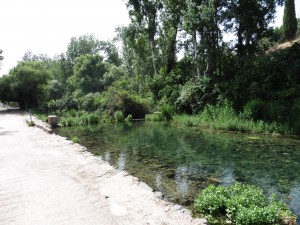
During this point, we were extremely close to the Syrian border and the Lebanon border…and later on the Jordan border. We were within sight of the United Nations Disengagement Observer Force, established in 1974. The UNDOF administrated buffer zone is 50 miles long, and 146 square miles, and seems likely to continue indefinitely. The mission has been attacked several times during the recent Syrian Civil War.
Quneitra, a controversial city in Syria, was a distant view away. In the 50s, the population of the city was about 20,000. The city was abandoned by the Syrians, who falsely
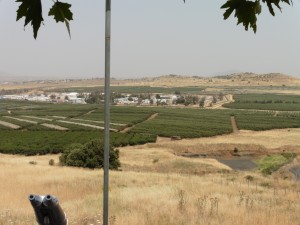
broadcast it had been conquered by the Israelis. The Israelis took advantage of the confusion to actually conquer the city. Syria shelled the abandoned city several times during the 1970s. The year after the Yom Kippur War, in 1974, the Israelis agreed to return the city to Syria under the condition it be repopulated as a sign of peaceful intentions between the two nations.
Syria has built a museum to memorialize the city’s destruction. They discourage repopulation of the area and have left it in its destroyed condition.
The final stop of the day was the Tel Hai monument. In 1999, I had stayed at the nearby Tel Hai Youth Hostel on my trip, but I do not have any recollection of visiting the monument.
In 1919, the British relinquished Tel Hai to French jurisdiction. The local Arabs wanted to be part of the new Arab Kingdom of Syria rather than under French rule. Zionists in Tel Hai remained neutral. The area was subject to frequent border readjustments. However, as newcomers they were suspected of being pro-French.
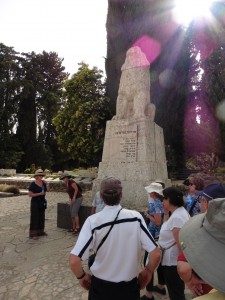
On March 1, 1920, several hundred Shiites attacked Tel Hai. Initially demanding to search the Kibbutz for French soldiers, violence escalated. There is some historical dispute about how things played out. Either the search was a ruse, or a series of misunderstandings escalated into a full conflict which ultimately killed eight Jews and ultimately led to the destruction of the village.
The city of Kiryat Shemonah is named after the eight Jews who died during the Battle of Tel Hai.
This ended Monday.
We’re still not at Jerusalem. Next time on Israel…Part 6: Tiberias, Beit Shean, Beit Alpha, and Gan Hashlosha…before we arrive into Jerusalem.
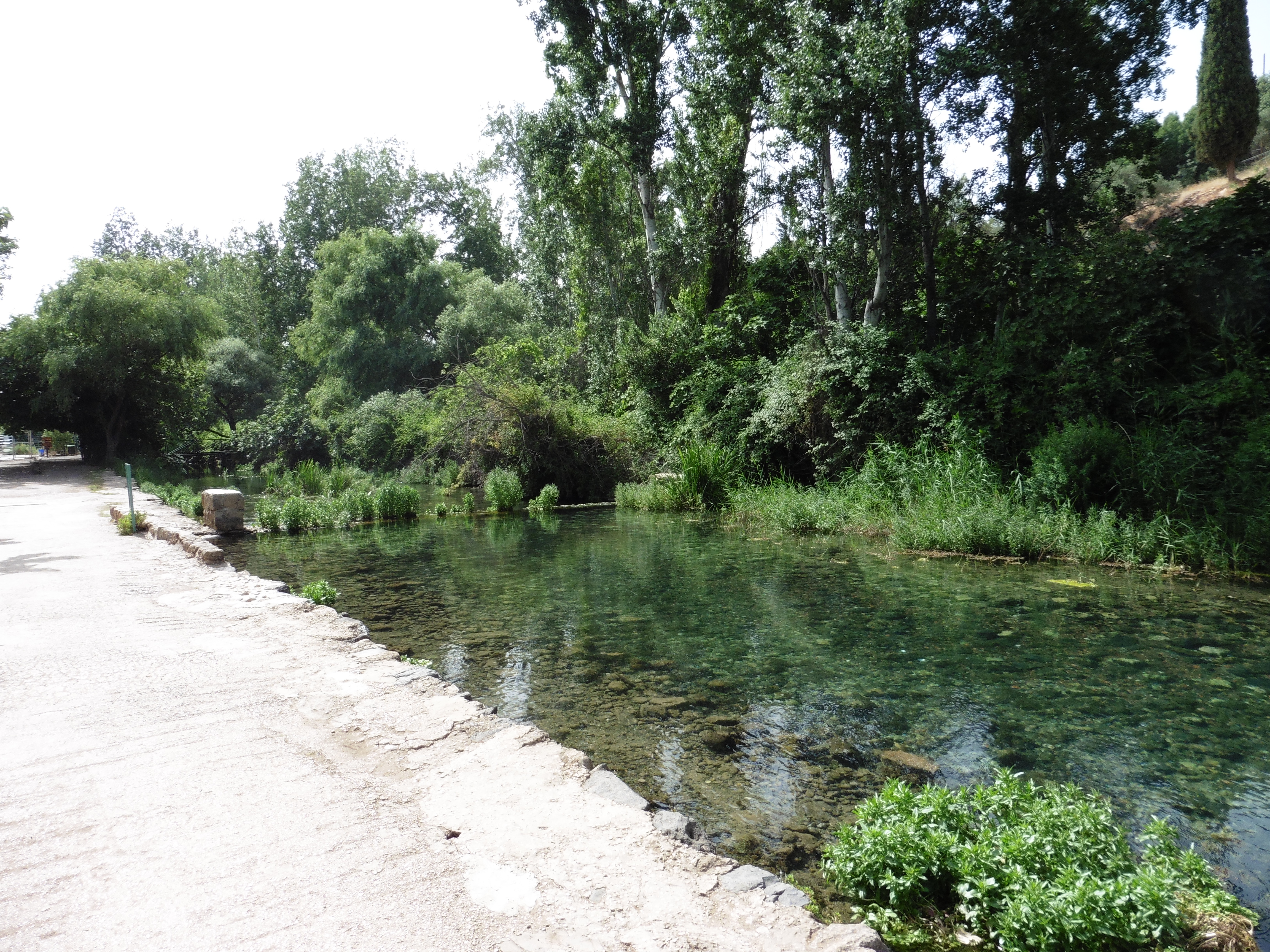
Keep ’em comin’…I luv reading the write ups..time to go bk to work..Shalom